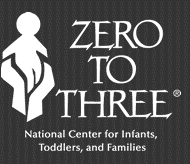In the Zero to Three website, there were a few sections of
information that are relevant to my current professional development of study.
By Zero to three serving as a program to benefit to support children ages zero
to three, they provide are a non-profit organization where they do not receive
any funds for this program. Zero to three includes policymakers in their
organization by informing them on the great advantages of the early childhood
program, In this course, Issues and Trends, we are currently learning about the
kinds of programs that are sometimes invested in, but not fully reliable. Throughout
the zero to three website, it gives the description of the organizations use of
each voice of the early childhood field: Economists, politicians and
Neuroscientists.
The issue of maltreatment, which can be a source of trauma in
young children has made me view it in a different way. After reading that
maltreatment effects children in the early weeks and months of life, I have
always thought that this kind of situation would affect older children only,
but I have learned differently. “Babies are active players in the world. Even
though they may not understand the meaning of what they see or hear, children
absorb the images that surround them and are deeply impacted by the emotions of
the people they rely on for love and security.” (Zero to Three 2015). Now I can
better understand why the organization Zero to Three is designed to support
children starting at birth, because they need support just as much as the young
children.
Although Zero to three is a non-profit organization,
economists do not play a major part in the organization because most of the
proceeds come from donations in support of military family projects, National
Training Institute and early head start. All of these projects are funded for
the benefit of children as well as family members. Politicians and
Neuroscientists work together in making policies for Zero to Three by using
research-based resources mainly regarding healthy brain development and
behavior while informing politicians on the great advantages of the early
childhood program, by including the research of Neuroscientists to prove why
quality development is necessary for young children.
